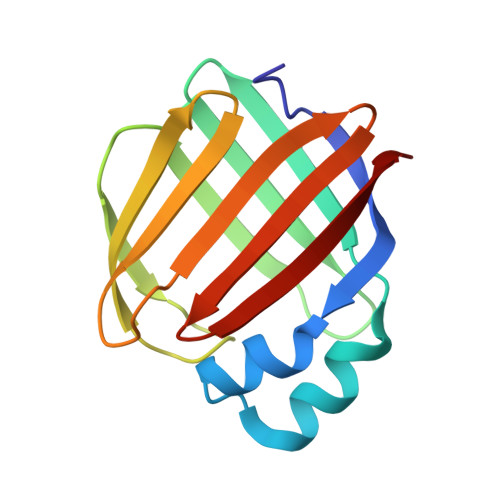Tuning the electronic absorption of protein-embedded all-trans-retinal.
Wang, W., Nossoni, Z., Berbasova, T., Watson, C.T., Yapici, I., Lee, K.S., Vasileiou, C., Geiger, J.H., Borhan, B.(2012) Science 338: 1340-1343
- PubMed: 23224553
- DOI: https://doi.org/10.1126/science.1226135
- Primary Citation of Related Structures:
4EDE, 4EEJ, 4EFG, 4EXZ, 4GKC, 4RUU - PubMed Abstract:
Protein-chromophore interactions are a central component of a wide variety of critical biological processes such as color vision and photosynthesis. To understand the fundamental elements that contribute to spectral tuning of a chromophore inside the protein cavity, we redesigned human cellular retinol binding protein II (hCRBPII) to fully encapsulate all-trans-retinal and form a covalent bond as a protonated Schiff base. This system, using rational mutagenesis designed to alter the electrostatic environment within the binding pocket of the host protein, enabled regulation of the absorption maximum of the pigment in the range of 425 to 644 nanometers. With only nine point mutations, the hCRBPII mutants induced a systematic shift in the absorption profile of all-trans-retinal of more than 200 nanometers across the visible spectrum.
Organizational Affiliation:
Department of Chemistry, Michigan State University, East Lansing, MI 48824, USA.
















